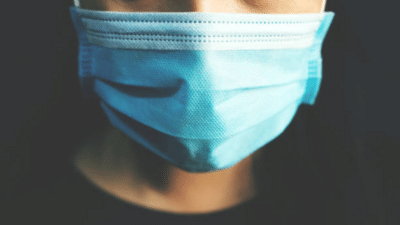A fresh wave of COVID-19 infections is sweeping through parts of Asia, reminding us that the virus hasn’t disappeared, it’s just evolved. It’s been over four years since it first disrupted our lives. It has since evolved from an unpredictable pandemic to a steady, lingering presence. Recent surges remind us that while the pandemic phase might be over, COVID-19 has become an endemic reality. That means it’s here to stay, possibly for years – changing, mutating and occasionally spiking. Emerging variants, fluctuating immunity will continue to challenge public health systems and businesses alike.
The good news? We have come a long way since 2020 in terms of readiness and resilience. Vaccines, improved immunity and health-conscious behavior have armed us with tools to stay ahead. But for these tools to work, we need to keep using them. We cannot make the mistake of being complacent, especially in workplaces where the health of employees directly affects performance, productivity and continuity.
Vaccines work, but the virus still circulates
Today’s vaccines, especially updated boosters, are still effective. They drastically reduce the risk of hospitalization, severe illness and death, even with newer variants. But they do not fully prevent the possibility of getting infected. That means testing remains essential. Whether it’s a travel mandate, the onset of symptoms, or exposure to a confirmed case, timely testing helps prevent spread and enables early treatment.
Keeping up with booster doses is particularly important for high-risk groups like the elderly, those with chronic illnesses, and frontline workers. And for organizations, encouraging vaccination is one of the simplest and most impactful ways to reduce workplace disruptions.
Masks: Small habit, big impact
Let’s not forget one of the simplest yet effective tools from the early pandemic was the mask. Despite pandemic fatigue, masks continue to offer reliable protection—especially in crowded spaces, poorly ventilated environments and during outbreaks. People who commute using public transport, work in enclosed office spaces, or regularly interact with clients would do well to continue masking when needed.
It’s a small adjustment with a big payoff, particularly for protecting those around us who may be immunocompromised or unvaccinated.
Rise of long COVIDMany people recovering from COVID-19 are finding that recovery doesn’t always mean ‘back to normal’. Long COVID, a condition marked by lingering symptoms like fatigue, cognitive difficulties, joint pain and breathlessness, affects millions globally. It doesn’t discriminate by age or health status and can persist even after mild or asymptomatic infections.
Children too can be impacted, with symptoms like headaches, brain fog and gastrointestinal issues affecting school performance and mental well-being.
Understanding immunity debt
Here’s another term we need to get familiar with – immunity debt. Pandemic precautions shielded us from many everyday germs, but in doing so, they also left our immune systems underexposed and undertrained. Now, as those barriers fall, we’re seeing a resurgence of common viral infections – people falling sick with common colds and flu with greater severity and affecting broader age groups.
This spike in viral illnesses could translate to more sick days, greater healthcare burden and operational disruptions at work.
From health protocols to health practices
At the start of the pandemic, we spoke about ‘health protocols. Now, it’s time to evolve that conversation to ‘health practices. These must become part of the long-term culture in our lives.
